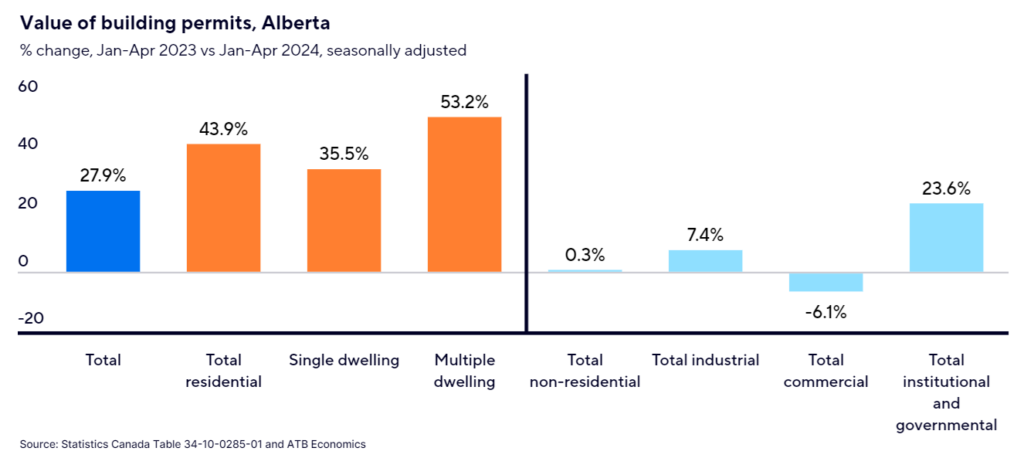ATB recently released its quarterly economic analysis, providing wide-ranging insights into GDP, inflation, population and employment rates, and touching on sectors like agriculture, construction, and energy on both a provincial and national level.
Over the past year, the province felt the bite of economic challenges caused by high interest rates, slower energy sector growth, and agriculture sector setbacks due to drought. However, ATB reports that Alberta is poised to rebound in 2025, driven by improvements in energy market access, stronger home construction, and meaningful expansion in the hydrocarbon and petrochemical manufacturing sector.
Alberta’s economy has key tailwinds propelling it forward, with growth projections indicating a real GDP increase of 2.5% in 2024 and 2.7% in 2025, soundly outpacing the national average. This resurgence is marked by a shift towards multifaceted growth across sectors. Despite energy investment remaining below pre-2014 levels, expansions in sectors like hydrogen, biofuels, food manufacturing, and petrochemicals are contributing to economic vitality. Emerging industries such as technology, aviation, tourism, and film are also gaining traction, underscoring Alberta’s adaptability and potential for innovation.
As evidenced by a 28% increase in building permits in early 2024, home construction is significantly driving growth, with residential investment projected to surge as demand outpaces supply. Housing starts grew by 53% YTD compared to 2023, with a forecasted 19% rise in 2024 to 42,900 units. Despite this searing growth, as CLRA members are all too aware, labour shortages persist in the specialty trades.
Alberta’s relative housing affordability continues to attract interprovincial migrants, bolstering population growth and consumer demand. Initiatives such as the $5,000 Alberta Moving Bonus have attracted interprovincial tradespeople to the province, adding further to the need for more housing.
Of particular interest to CLRA members, the province is spearheading several large-scale, energy-related projects, notably in hydrogen production, natural gas market access and carbon mitigation. Major projects include Air Products’ $1.6 billion Alberta Net Zero Hydrogen Energy Complex in Edmonton and Dow’s $11.6 billion Path2Zero project in Fort Saskatchewan.
The province is also focusing on hydrogen-powered transportation and infrastructure, with plans for a hydrogen fueling network along the QE II Highway. In addition, the Trans Mountain Pipeline Expansion (TMX) has commenced operations, providing crucial additional access for oil producers to deliver to new coastal markets. The benefits extend beyond oil, as natural gas producers stand to gain from projects like Coastal GasLink and upcoming Liquified Natural Gas (LNG) facilities.
As Alberta charts its course through 2024 and beyond, the province will need to capitalize on emerging opportunities while navigating global economic headwinds. With strategic investments across diverse sectors and supportive policies, Alberta is well-positioned to regain economic momentum and sustain growth in the years to come. And, most importantly, its skilled tradespeople are ready to build.
Read the full report here.
